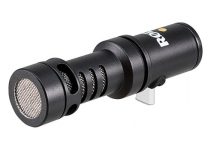There’s nothing that gives a sense of greatness and awe like watching an action in slow-motion. While most consumer cameras nowadays can shoot up to 60 frames per second, it’s not quite the same as shooting at 120fps or higher. That’s because typically when shooting at 60fps, you can only really slow the video down by 40% maximum. To get extreme slow motion (the proper term being high-speed slow motion), however, you’d normally require a more expensive camera that’s capable of extreme overcranking.
Thankfully, seasoned video editor and Premiere Pro expert Kyler Holland explains how to get high-speed/extreme slow motion inside of Premiere Pro CC, all without using an expensive camera. The process is very simple and can be done effortlessly as long as you pick your shot wisely.
It is worth noting that before proceeding, this effect has significant limitations. It shouldn’t be compared to the usefulness of a camera that shoots at higher frame rates. Since the high-speed slow motion is created artificially, there can’t be a lot of motion of the camera or of the subject. Even something as simple as a blink of an eye can ruin the effect. Realistically, you will be using about 1-2 seconds of a clip and then expanding the footage to less than ten seconds.
That being said, you can begin the effect by selecting a portion of a clip with as little movement as possible. Then trim the rest of the video so that only your selected portion remains. Afterward, right click on the footage and click on Speed/Duration. Set the speed to 5% and set the Time Interpolation to Optical Flow.
What Optical Flow is going to do is create additional frames in between the original ones of your footage in order to produce an image that appears as if it was truly shot at a higher frame rate than 60 frames per second.
Furthermore, you can apply some sort of artificial camera movement inside of your NLE by either using a custom preset or modifying some of the Effect Controls of your clip. As Kyler Holland recommends, don’t forget to nest your clip first after slowing it down, right before you apply any further changes. This step should add more production value to your shot as well as it will help you to sell the effect better.
The last step now is to select the clip in the timeline and then render it. To do this, drag the play head over your footage then press the X key on your keyboard. Next, go to Sequence > Render In and Out Points. Make sure you do this before playing back your footage or else the effect will appear as if it doesn’t work correctly.
With this technique, you have the ability to obtain high-speed slow-motion video from short portions of your footage. As long as you understand the limitations of the suggested workflow, you can use this knowledge to your advantage, especially if you need to add some last-minute flare to any of your projects.
[source: Kyler Holland]
Disclaimer: As an Amazon Associate partner and participant in B&H and other affiliate programmes, we earn a small comission from each purchase made through the affiliate links listed above at no additional cost to you.



